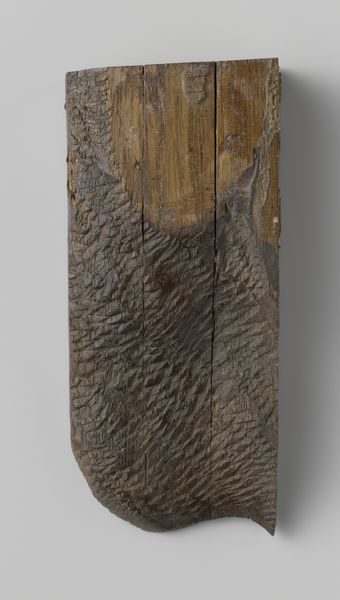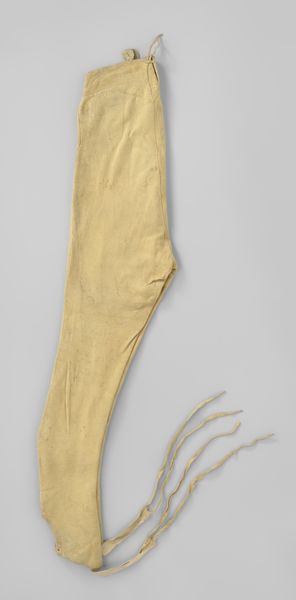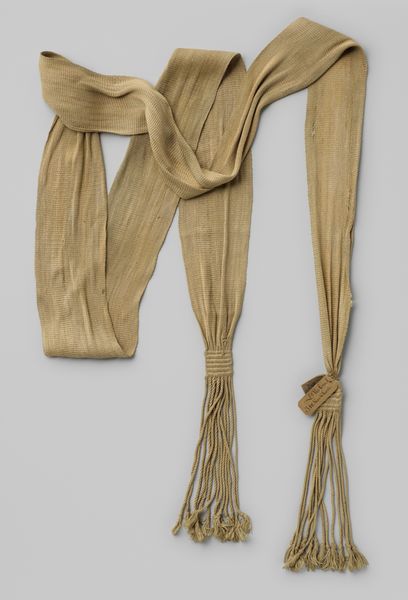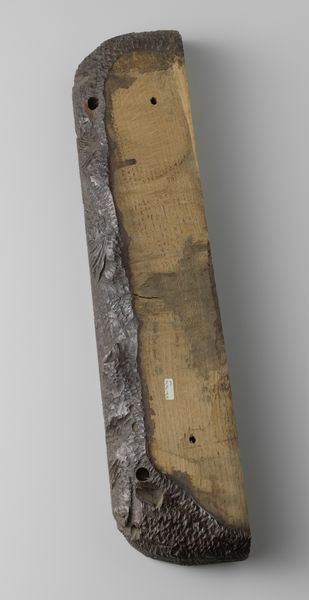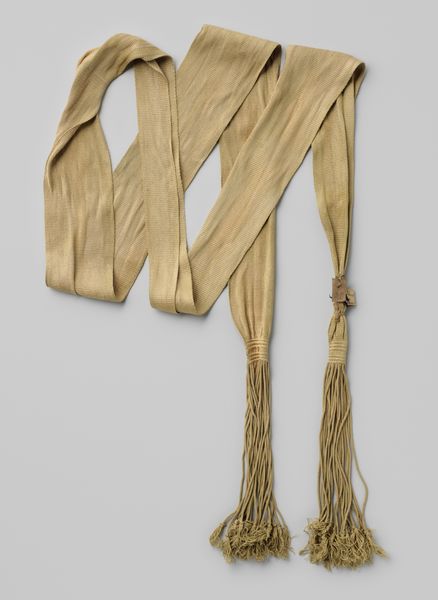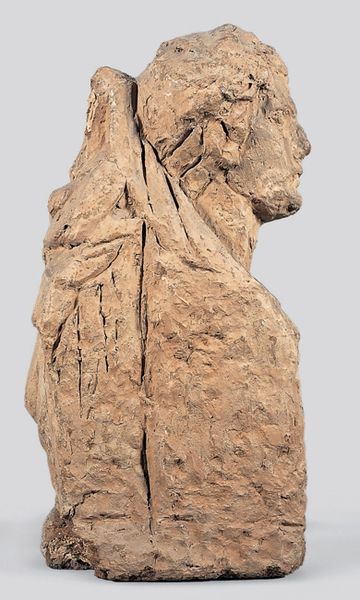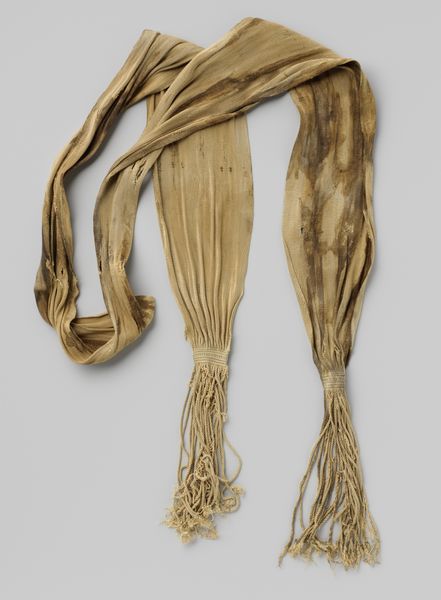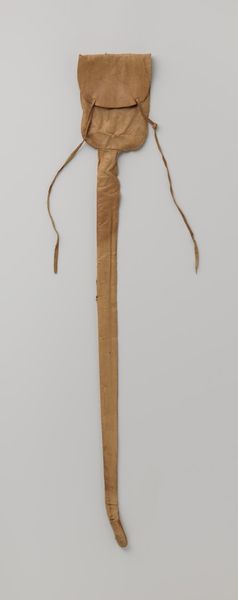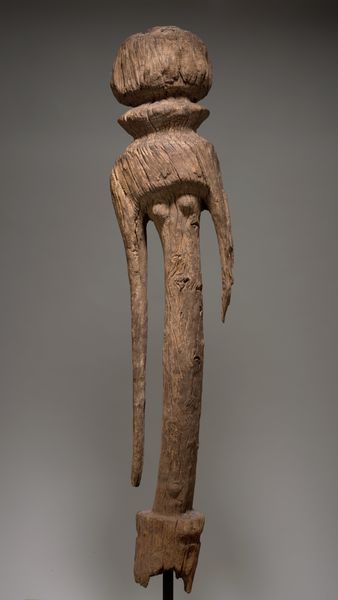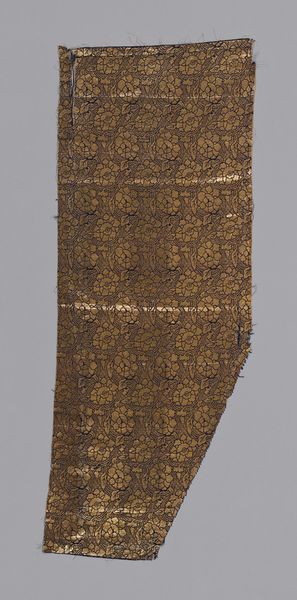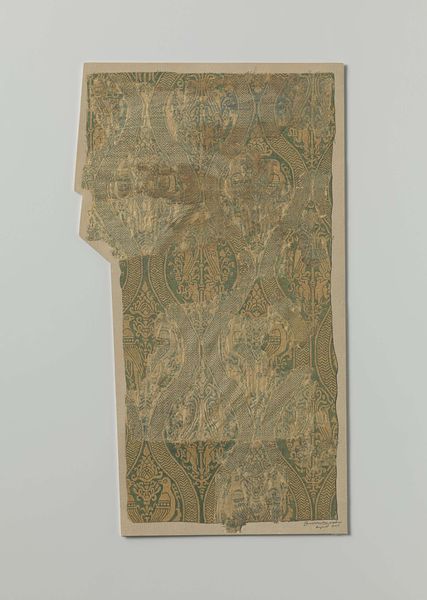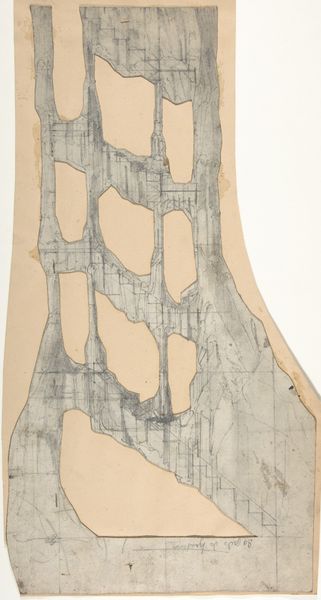
Linen Shirt, Presumably Worn by Henry Casimir I during the Siege of a Fort at Hulst in 1640 before 1640
0:00
0:00
textile, found-object
#
medieval
#
textile
#
found-object
#
romanesque
Dimensions: length 130 cm, width 52.5 cm, width 148 cm, height 16 cm, depth 60 cm
Copyright: Rijks Museum: Open Domain
Curator: This is a remarkable survival: a linen shirt, now preserved at the Rijksmuseum. It is believed to have been worn by Henry Casimir I during the Siege of Hulst in 1640. Editor: The object certainly makes a striking first impression. What hits me immediately is its visceral quality, its distressed texture… like a relic charged with intense historical presence. The uneven staining almost seems to tell its own story of wear and tear. Curator: Indeed. The visible degradation – the holes, the discoloration – are central to its significance. Note how the surviving form maintains the fundamental structure of a shirt, albeit in a skeletal or ghost-like state. The play of light across the aged fibers highlights this decay, giving it a morbid beauty. Editor: I find myself pondering the politics ingrained within even the most quotidian garment. What statements did Casimir's sartorial choices project amidst that particular power dynamic? How do we contextualize its gendered dimensions, its evocation of bodily vulnerability within the military context? And does it reflect the impact on ordinary individuals caught amid broader conflicts, subtly underlining its role as silent witness? Curator: You raise an important point about its political encoding. On a technical level, observing the cut and the remnants of the seams reveals much about the garment production and textile trade in the 17th century. How social stratification was expressed through available fabrics, detailing of the sleeve construction... the structural properties create this discourse. Editor: I wonder if preserving such a poignant garment carries symbolic weight for marginalized people. The scars displayed carry layers of embodied pain from political marginalization to human fallibility. By confronting us, does this provoke difficult dialogues while giving dignity to narratives of defiance and healing from traumas experienced? Curator: Absolutely. Ultimately, an object like this compels us to consider the enduring relationship between objecthood and meaning-making and how both invite aesthetic contemplation alongside historic interpretation. Editor: Exactly. These kinds of unassuming materials connect across periods and echo down centuries by providing access into our layered memories, prompting profound reflections on the continuing search for justice by acknowledging wounds while pursuing possibilities for growth through mutual compassion.
Comments
No comments
Be the first to comment and join the conversation on the ultimate creative platform.
